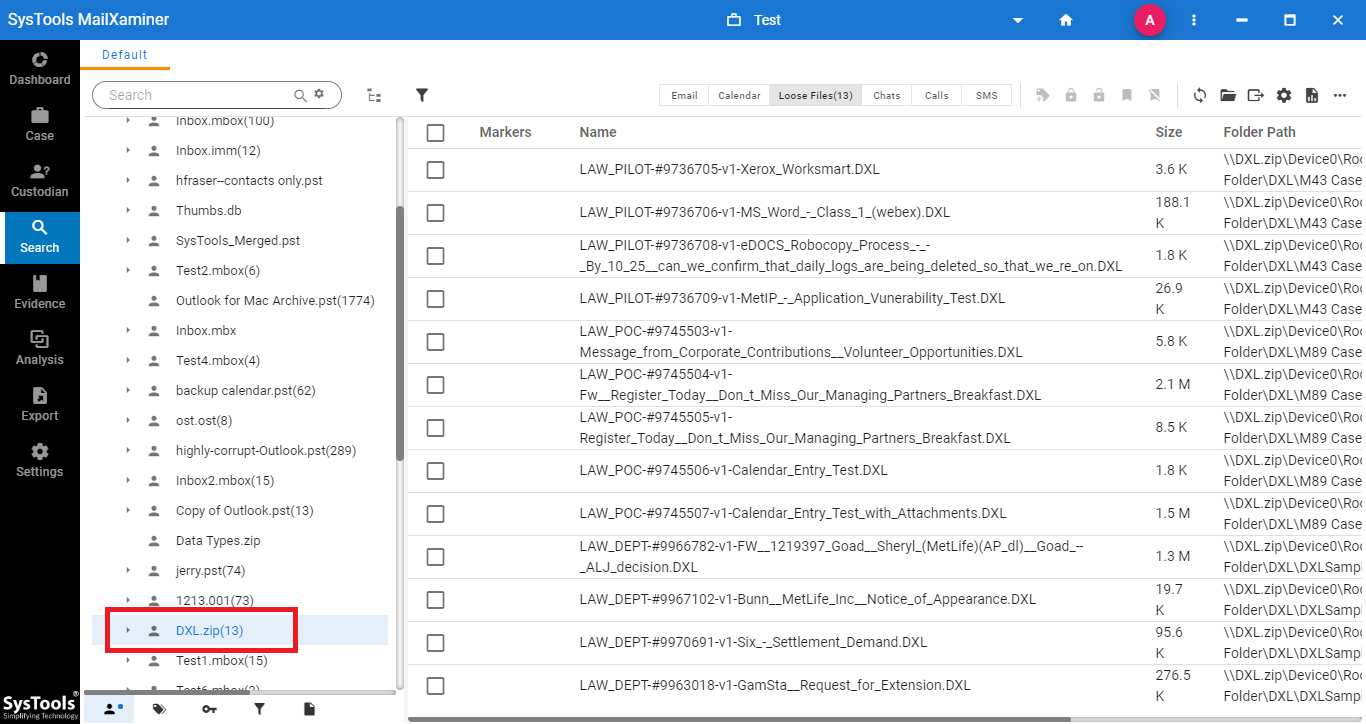ZIP File Forensics – Analyze & Extract Digital Evidence from Archive
ZIP file is the most commonly used archive file format, which supports lossless data compression. Basically, it acts as a data container that stores multiple files/ directories in compressed format. Using the .zip file, one can transfer large amounts of data by compressing its size, and also the data within the zipped file can act as a backup. ZIP file forensics enables an examination of the illegitimate activities that took place through the transfer of compressed data.
Moreover, with the deep forensics analysis of the ZIP file format, one can efficiently extract the evidence which resides within the archive file. ZIP file supports different types of compression algorithms to compress and store multiple files. Moreover, DEFLATE is the most commonly used compression algorithm in .zip file format.
Integration of Digital Forensics
Nowadays, a majority of users prefer ZIP files to share and transfer large amounts of data. Because of this, it is important to examine the ZIP file for forensic investigation. Through ZIP file forensics, the investigating officers can discover hidden files, which can act as concrete proof for further investigation of cybercrime.
In addition, one of the remarkable functionality of the ZIP file is that it can compress all types of digital data, regardless of the file format and size. Besides this, a .zip file can be easily accessed on one’s machine. As a result, users can seamlessly transfer and open a large amount of data of different types within the ZIP file. It uses .zip to archive the data, which is always in a packed format.
In order to access the compressed ZIP file, one needs to unzip and extract the data present in it. However, the time required to decompress the file will totally depend on the size of the data present in it. As a result, the investigation officers look out for some other alternative that will allow analyzing the stored data without extracting the .zip file.
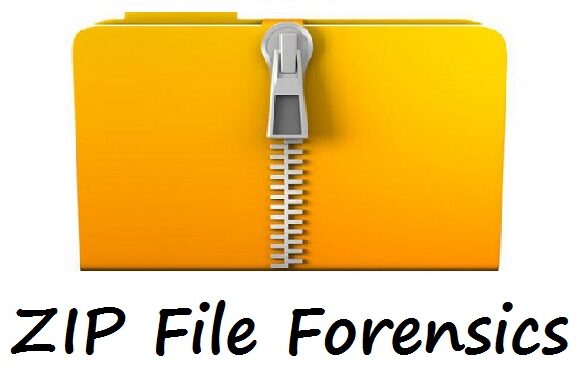
A Professional Way to Forensically Analyze ZIP File
The use of MailXaminer Email Examiner Software allows the investigating officers to execute the examination process by thoroughly analyzing the digital data stored in it. It facilitates forensic .zip file analysis feature. As a result, one can easily add a large amount of data in a compressed format. After this, the tool will automatically extract all the evidential files stored from the ZIP file. This will help the investigating officers to save time to a greater extent in terms of extracting and analyzing the data.
Following is the procedure of ZIP file forensics using the feature-rich digital forensic software.
Step-1. Add Zip File
Before starting the forensics analysis of .zip file format, add the ZIP file to the software panel. Once the software is launched, navigate to Add New Evidence >> select ZIP from the Image tab >> Browse the file location from the system.
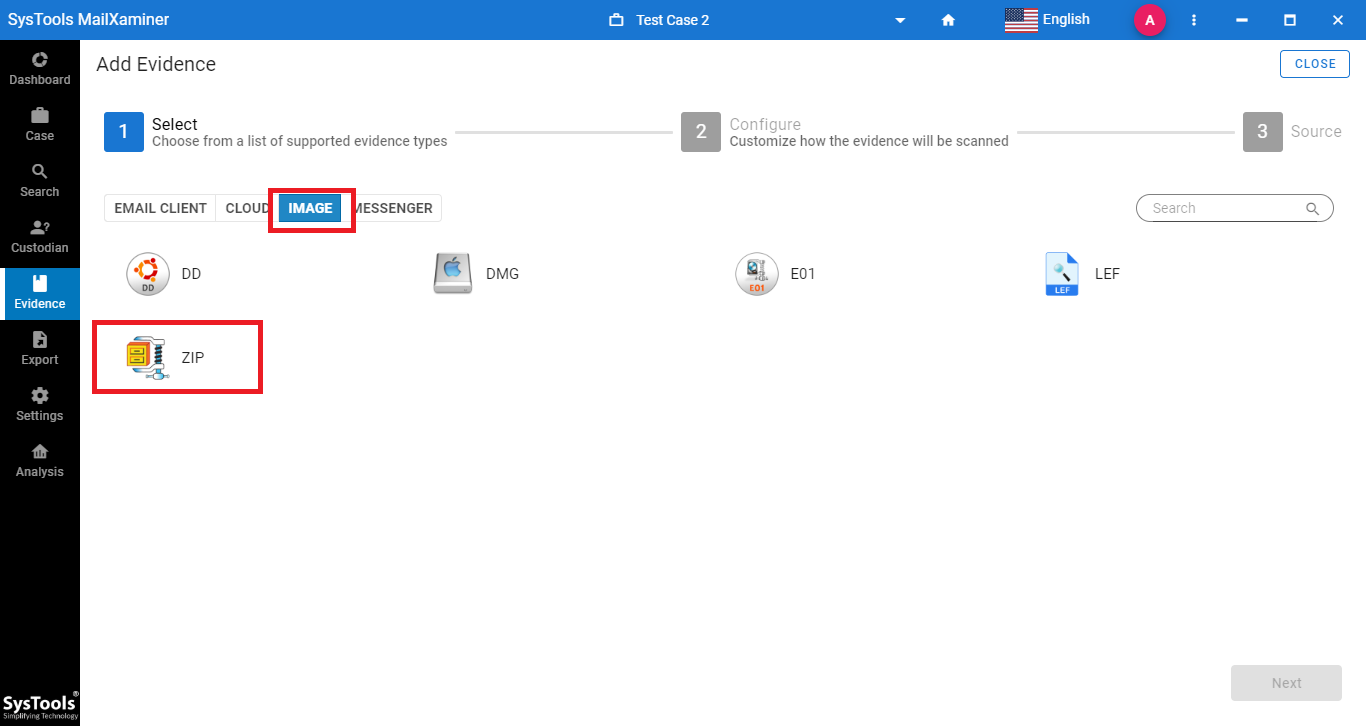
Step-2. View Extracted Files
Within the display panel of the software, users can easily view the data from the scanned .zip file. The tool automatically extracts each file formats stored within the archive file separately. This helps the investigator to analyze each file separately in its original file format and efficiently perform a forensic investigation on it.
Step-3. Analyze Suspected Evidence File – Zip File Forensics
From the right panel of the software, one can easily examine the suspected evidential data from the archive file. This includes Email, Calendar, Loose File, Chats, Calls and SMS. Additionally, it allows implementing the forensic analysis of ZIP file using different views such as Message, HEX, MIME, HTML, RTF, Properties, Message Header and Attachments. Each view helps the investigators to obtain different information and hidden evidence from the data file.
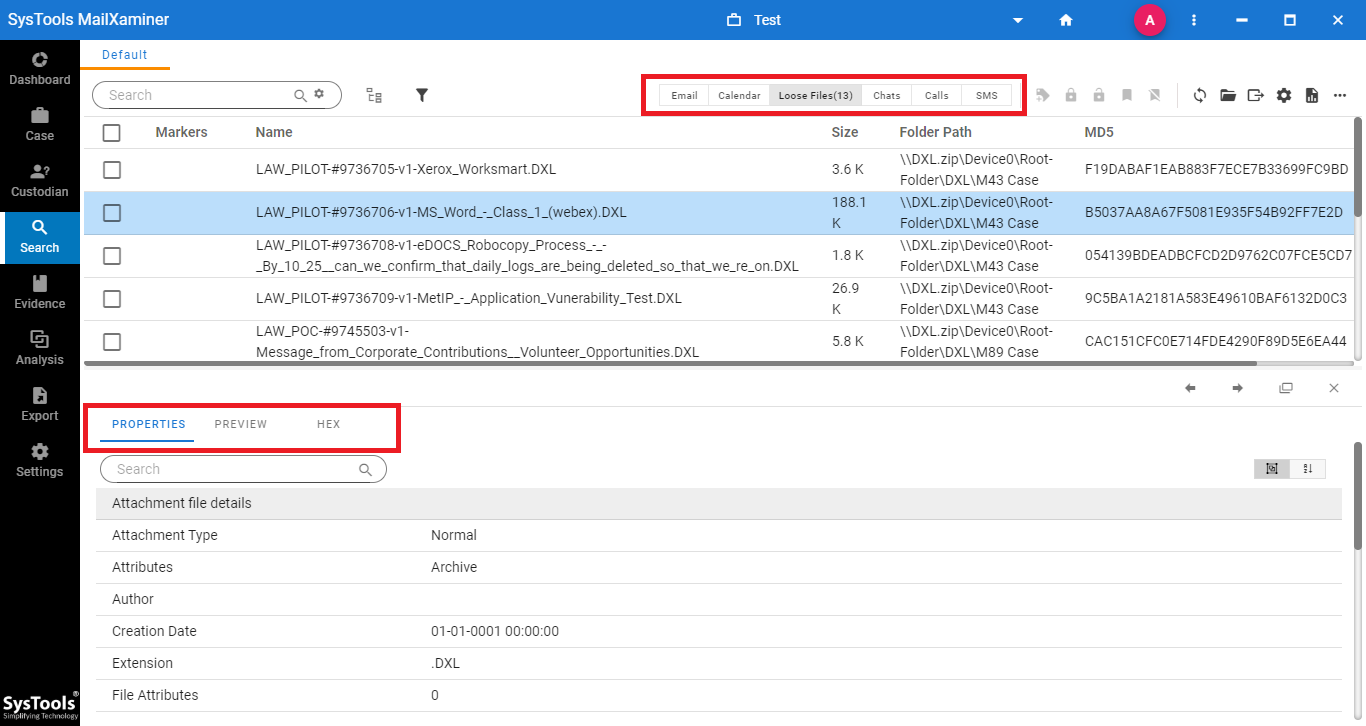 Step-4. Examine Embedded Attachments
Step-4. Examine Embedded Attachments
With the automated tool, performing the .zip file forensics of attachments/ media elements embedded within the file separately is easy. The tool categorizes the attachments and media files. this happens based on its sensitivity level.
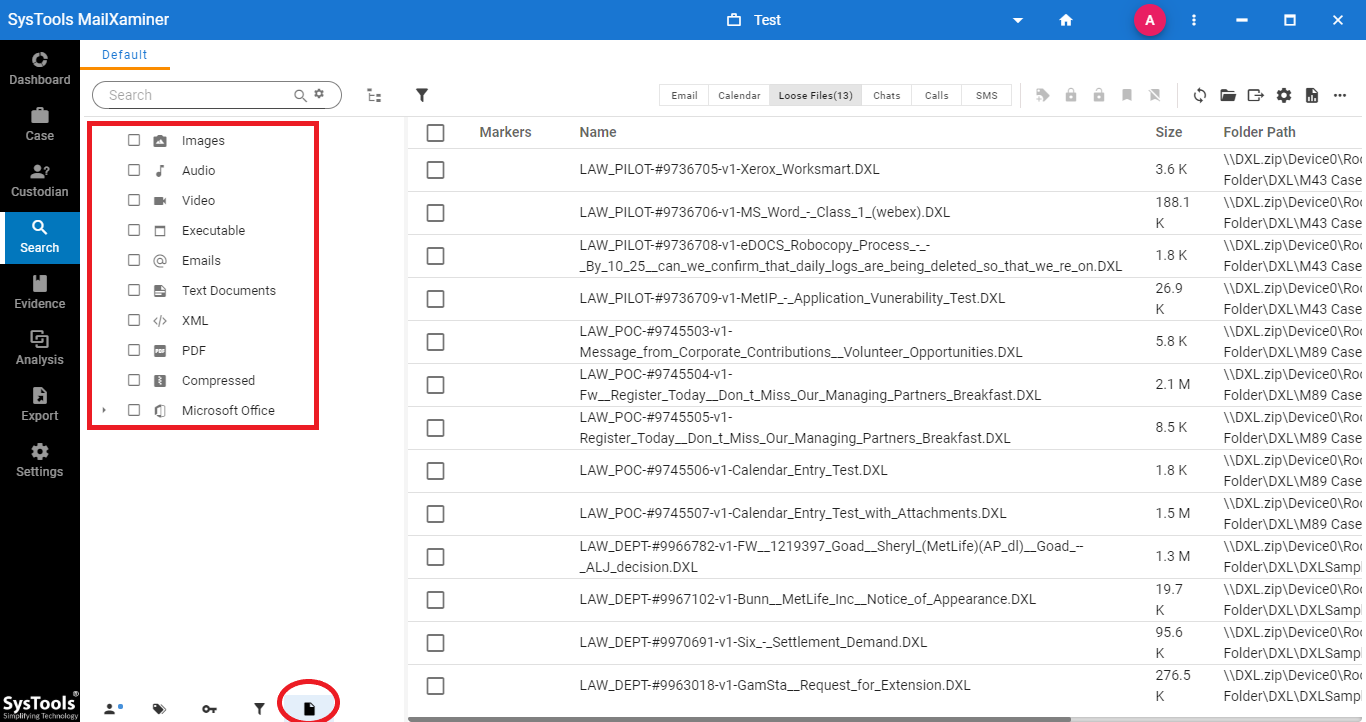
Step-5. Search Operation
The tool provides an advanced search option to find and extract the evidence from the scanned data file. The software supports different search algorithms such as General, Proximity, Fuzzy, Stem, Wildcard & Regular Expression to perform in-depth search operation in an efficient manner. Each algorithm helps to find the evidence with different criteria along with providing the answer in a more accurate way.
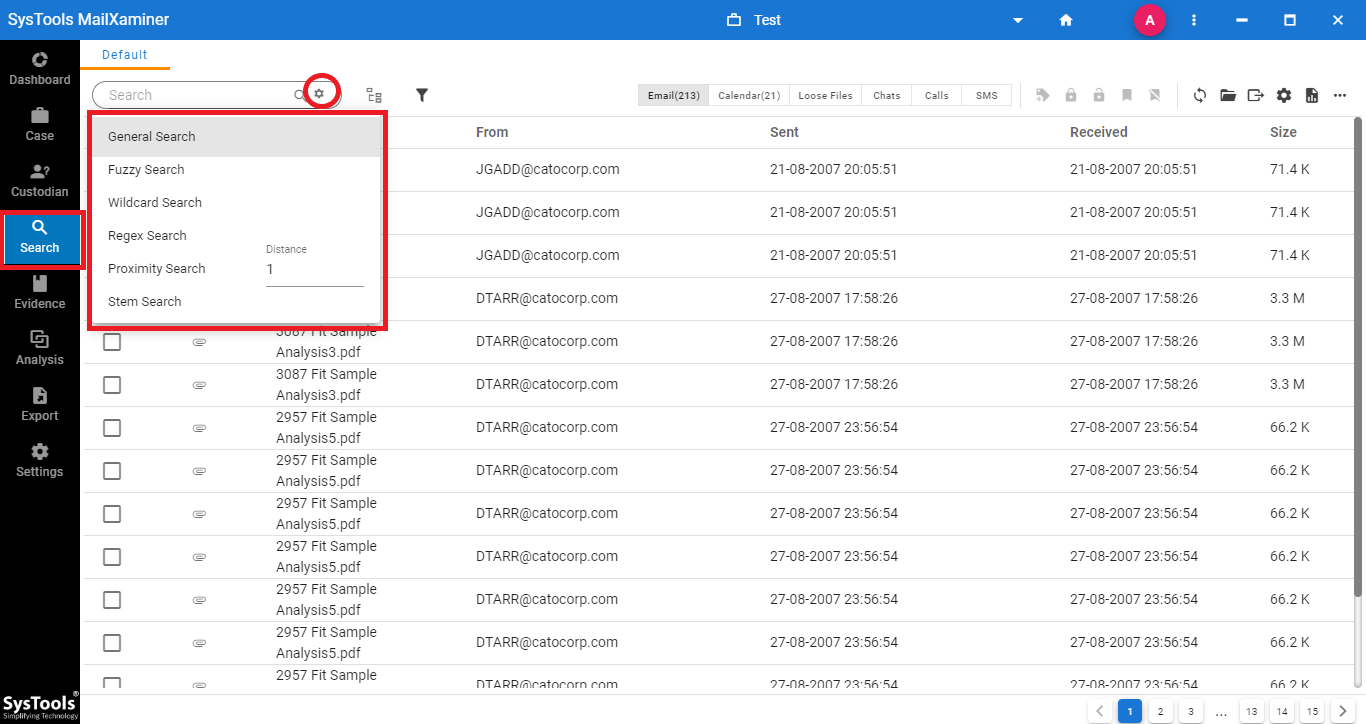
Final Words
ZIP file forensics is the finest way to detect and extract the evidence, which may reside within the archive file. With the help of an email forensic tool, users can effortlessly perform the forensic analysis of ZIP file format. Various email views and powerful search features can be useful aid in this. Moreover, the interactive user interface makes it even easier for new users.


